- February 2, 2024
- Annual report available
- January 29, 2023
- Annual report available
- June 3, 2022
- New website features
- January 6, 2022
- Deployments completed with Arkansas fieldwork
- November 22, 2021
- Project overview video available online
- Swans are on the move!
- April 2, 2021
- New Monitoring Effort
- March 3, 2021
- Lots of Trumpeter Swan movement north!
- January 19, 2021
- 2020 Annual report added to website
- Recent public outreach
- December 4, 2020
- Taking Stock
- December 3, 2020
- Shout out to Hong Kong!
- August 20, 2020
- Trumpeter Swan Habitat
- August 10, 2020
- Fieldwork Overview
- End of 2020 Field Season
- June 27, 2020
- Start of the 2020 Field Season
- April 18, 2020
- New Updates tab created!
- Expanding the geographic extent of fieldwork in 2020
- Additional research questions
- Arkansas fieldwork
In this section we’ll highlight recent news and developments with the
project.
Posts will appear in chronological order with the most recent at the
top.
If you’d like to subscribe to be notified of project updates, email me
at wolfs064@umn.edu.
February 2, 2024
Annual report available
For updates on project activities in the past year be sure to check out the new annual report for 2023.
January 29, 2023
Annual report available
For updates on project activities in the past year be sure to check out the new annual report for 2022.
June 3, 2022
New website features
We just added a table to the ‘Most Recent Locations’ tab summarizing the displacement (i.e. distance from start point to end point) for each swan during the most recent 7-day period. There isn’t a lot of movement right now as most swans are on their breeding territories, but hopefully this will make it easier to track the occasional long-distance movement, and also to track individuals once migration starts.
Also, feel free to try out the test version of an interactive web application displaying the movements of each swan during the 10 days after each GPS collar was deployed. You can select swans by their alpha-numeric collar code can see each individual trajectory over time including distance moved from the capture location and which habitats each swan used.
https://david-wolfson.shinyapps.io/shiny_test/
January 6, 2022
Deployments completed with Arkansas fieldwork
On an unseasonably cold day in late December at Heber Springs, Arkansas, project partners completed the last of the original deployments planned for this project. GPS data from swans captured on their overwintering grounds provides additional information on the breeding sites and movement patterns of swans undergoing long-distance migration. Many thanks to Karen Rowe, Gary Ivey, Luke Naylor, and others with the Arkansas Game and Fish Commission for their efforts!
November 22, 2021
Project overview video available online
David Wolfson recently gave a virtual presentation to the Iowa Young Birders group. The talk provided an intro on trumpeter swan biology, a brief history of Trumpeter Swans in the Midwest, and an overview of the ongoing study.
Thanks again to Tyler Harms, executive director of Iowa Young Birders for the chance to spread the word.
You can watch the presentation at the Iowa Young Birders Youtube channel using this link: https://youtu.be/td901cXSKmY
Swans are on the move!
As winter starts to take hold and water bodies freeze up, we’re seeing lots of long-distance movement south. Are you observing shifts in swan numbers around you? Let us know!
April 2, 2021
New Monitoring Effort
Overview: Beginning in 2019 as part of a study of Interior Population trumpeter swans, we and our collaborators equipped swans in Minnesota, Michigan, Ohio, Iowa, Wisconsin, and Manitoba with GPS-GSM transmitters affixed to neck collars with 2-character alpha-numeric codes. The objectives of our study are to evaluate migration patterns, local movements, habitat use, genetics, and survival of trumpeter swans in the re-established Interior Population. As part of that larger study, we are also interested in estimating the timing of transitions between breeding-season behavioral stages (e.g., establishing breeding territories, incubation, and brood rearing). We hope to accomplish this goal through a combination of direct observation of a limited number of radio-marked swans and modeling (i.e., informed by comparing behavioral observations with telemetry data).
Our request: For a subset of radio-marked swans in our study, we are seeking observations of status on a regular basis throughout the breeding season (April through mid-summer or later, depending upon ease of observation). Specifically, we are seeking any observations of radio-marked swans, and are especially interested in frequent observations during the periods when swans are establishing breeding territories, egg laying, incubation, and brood rearing (through the time when swans gain the ability to fly).
Observation criteria: We are seeking observations of swans that can be made without undue disturbance at regular intervals. We are interested in any observations, but weekly or daily observations are preferred. The ideal situation would be monitoring a pair of swans frequently that are easy to observe without causing undue disturbance (e.g., swans that could be observed from a vehicle in the course of your weekly or daily routine).
How to report observations: We are asking anyone willing to make observations to report those observations via a Google form (https://forms.gle/GdKyqSXFg7DBQhEb9). To help with locating radio-marked swans, we will be providing frequent updates of marked swan locations at https://trumpeterswan.netlify.app/last_7days_locations.html.
What to report: The information we are requesting is included in a Google form (https://forms.gle/GdKyqSXFg7DBQhEb9). Basically, we are seeking the following information via selecting from a menu in the Google form:
(1) Identifying information (collar code)
(2) Date, time, and location of observation
(3) Nesting status, behavior, and presence of other swans (mate, cygnets)
(4) Your identification (not required)
Whom to contact: This effort is being coordinated by an undergraduate wildlife major at the University of Minnesota, Kaia Hilgendorf-Roost (hilge199@umn.edu) with assistance from David Wolfson (wolfs064@umn.edu), David Andersen (dea@umn.edu), and John Fieberg (jfieberg@umn.edu).
March 3, 2021
Lots of Trumpeter Swan movement north!
Just a heads up that many marked swans are leaving their overwintering areas and heading back up north. It’s an exciting time of year!
January 19, 2021
2020 Annual report added to website
It’s been a big year for this project! To read all about 2020 fieldwork, preliminary results, next steps, and more, check out the Reports tab.
Recent public outreach
In addition to uploading the 2020 annual report, listed below are some other ways we’ve disseminated project information:
Minnesota Conservation Volunteer, the publication of the MN Department of Natural Resources, featured the project in their January-February 2021 edition.
We gave a project update to the Mississippi Flyway Council, a collection of wildlife professionals from state and federal agencies, during their January meeting.
We gave an oral presentation at the Midwest Fish and Wildlife Conference, an annual regional conference focused on natural resource topics in the Midwest.
December 4, 2020
Taking Stock
As we move into winter, many swans are making flights south to avoid cold temps and freezing lakes. Those that remain at high latitudes are shifting from lakes to major rivers that retain flowing water.
If you have questions about seasonal movements, migration or other aspects of the annual cycle, please feel free to reach out and let me know. Are there particular pieces of information you think would be compelling to quantify? What kind of data presentation would be most intriguing to you? I know there are many out there with a long history of observing trumpeter swans that have helpful opinions to share. Don’t be a stranger!
December 3, 2020
Shout out to Hong Kong!
I was recently contacted by a 5th grade student in Hong Kong. Emmanuel, thanks for your interest in trumpeter swans and it’s great to see that news of this project is reaching larger audiences!
August 20, 2020
Trumpeter Swan Habitat
(authored by rockstar 2020 field technician Tori Drake)
Trumpeter Swans choose habitat based on multiple different ecological factors with the main ones being available forage, suitable shoreline, and low human disturbance.
While working this summer we found a variety of wetland types that were being used by swans, and all of them included healthy amounts of available food, including submerged aquatic vegetation, emergent vegetation and invertebrates. Trumpeter Swans will forage on pondweeds (Potamogeton spp.), Chara spp., and Wild Rice (Zizania aquatica) along with arthropods, snails and even fish on occasion.
Trumpeter Swans will select wetlands varying in size from less than 1 hectare to large shallow lakes over 7,000 acres in size with irregular shorelines and suitable nesting areas. We found swans on anything from beaver ponds to managed impoundments to wildlife management areas across the state in the big woods to the prairie pothole region. Most wetlands had either beaver lodges or muskrat huts for nesting and loafing areas along with matted down areas of cattails or grasses;. Another note about the wetlands visited this summer were most had emergent vegetation in the middle or sporadically around the wetland, whether it be cattails or grasses or bulrush, all this vegetation is used for foraging and to hide from predators.
Human disturbance was the biggest factor for wetlands used by swans this field season. Almost all lakes had no regular boat or human traffic on them during the breeding season. This low disturbance allows for less stress on the swans while trying to raise their young. To access these lakes and ponds we would have to either drag in from the road or if we got lucky and the lake is a major waterfowl hunting lake there would either be a dirt or concrete boat launch we could back into.
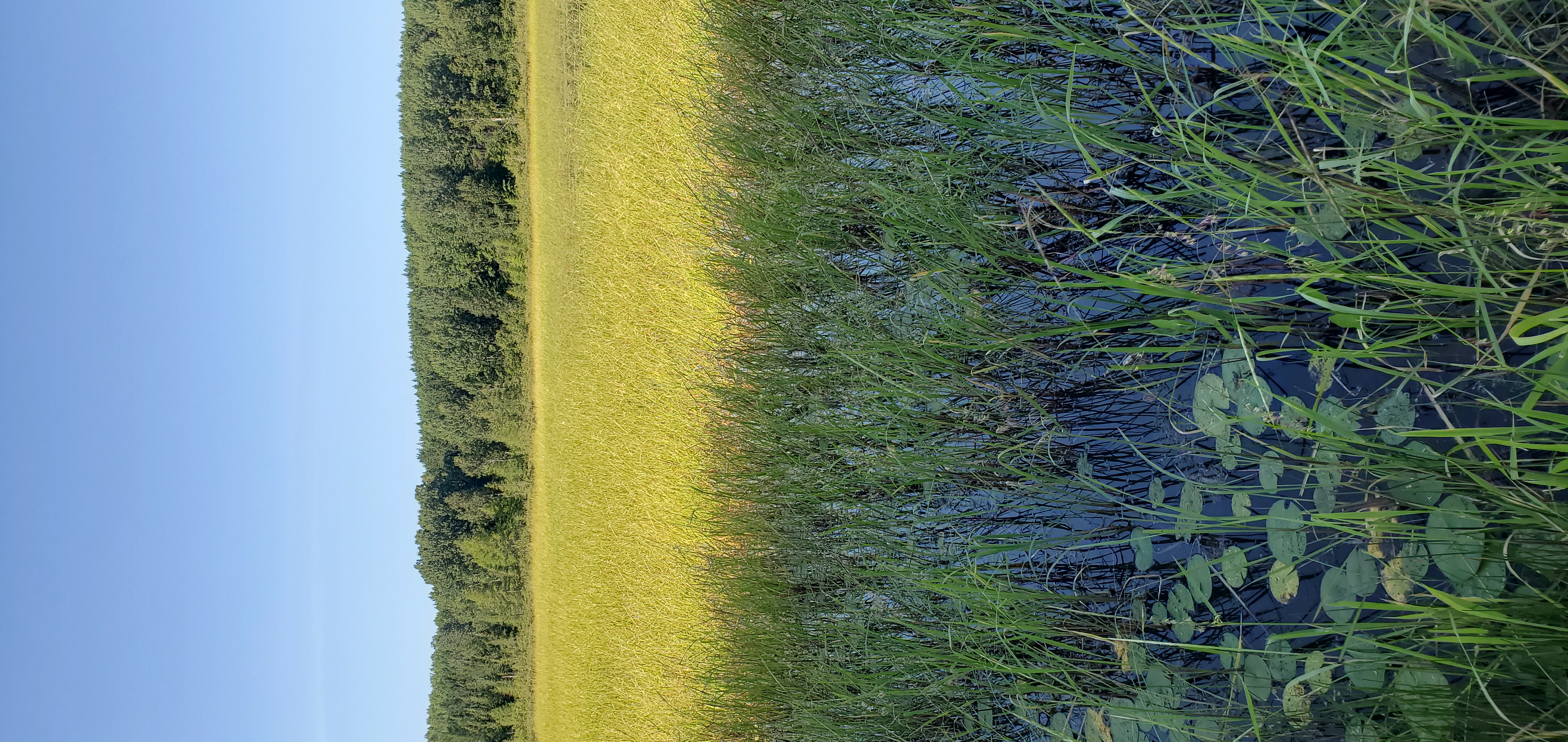
August 10, 2020
Fieldwork Overview
The primary kind of data that this project relies on is trumpeter swan movements, more specifically GPS locations. In order to provide interpretation for as much of the population as possible, we tried to space out capture locations where we collared swans. Adult swans undergo a ‘molt’ once a year during the summer. During this period they replace their primaries (flight feathers) and are not able to fly.
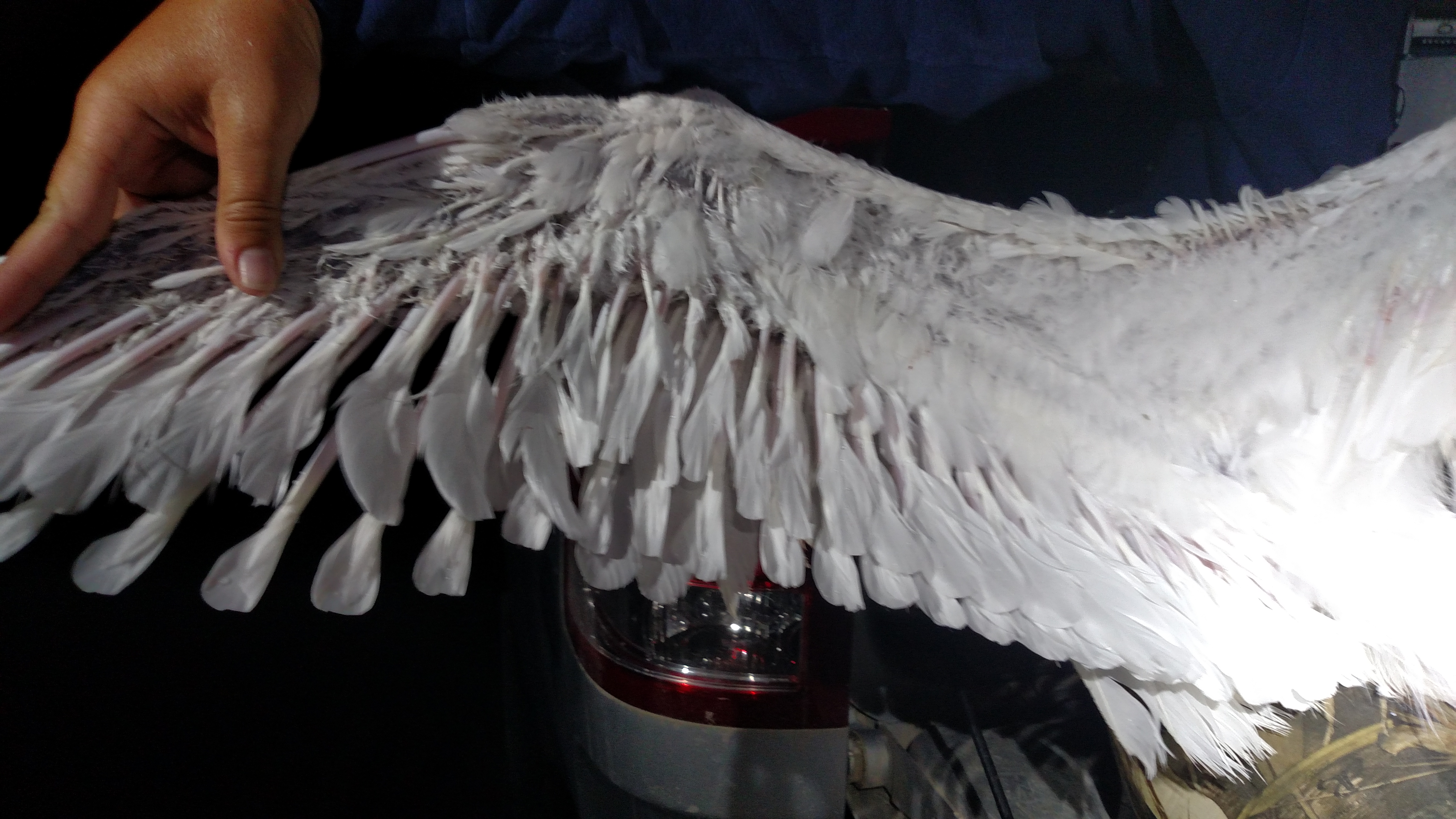
We apprehend the swans using a flat-bottom 14 foot jon boat with a
mud motor. This setup allows us to get around even in extremely shallow
wetlands where swans often reside.
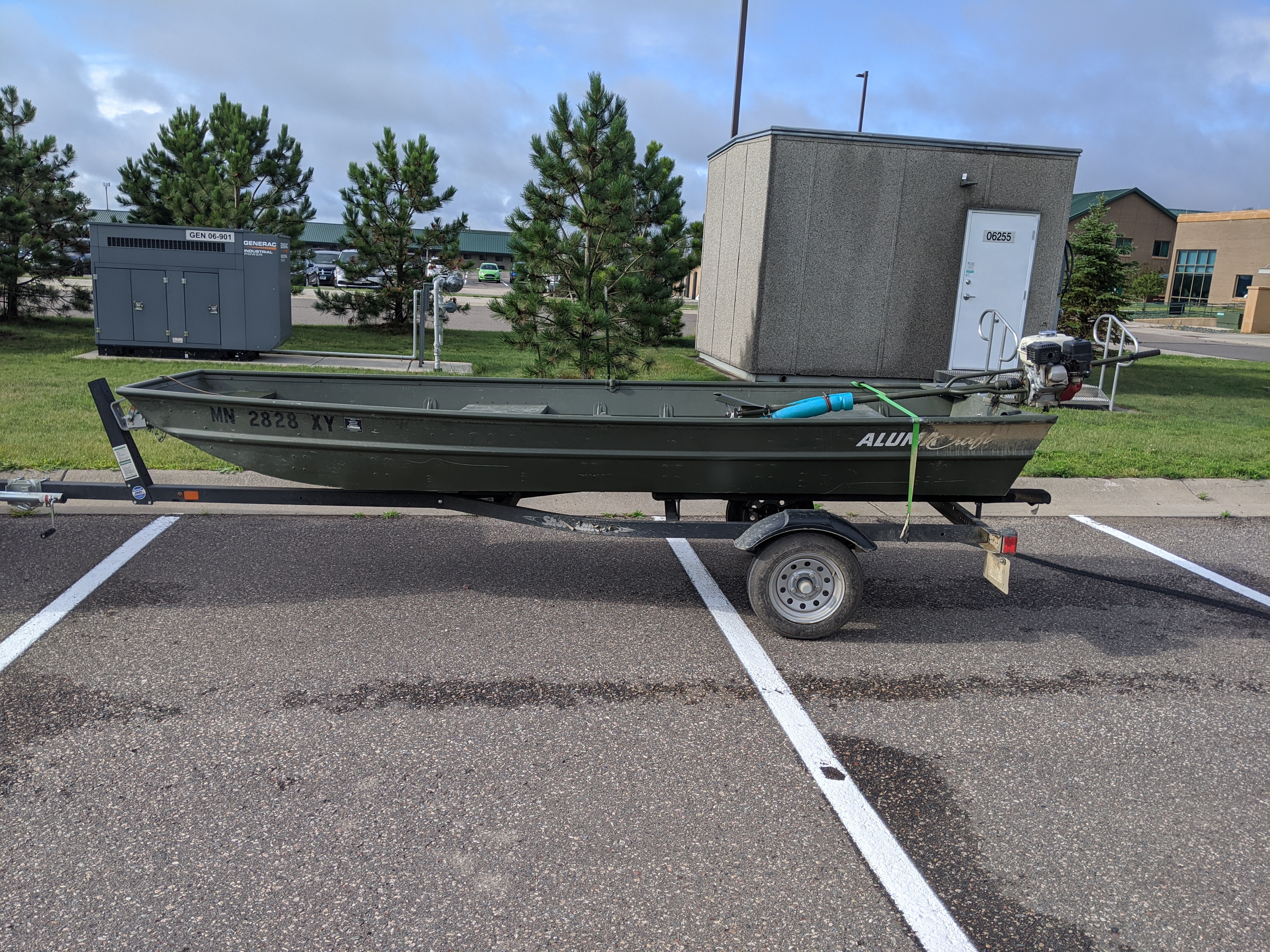
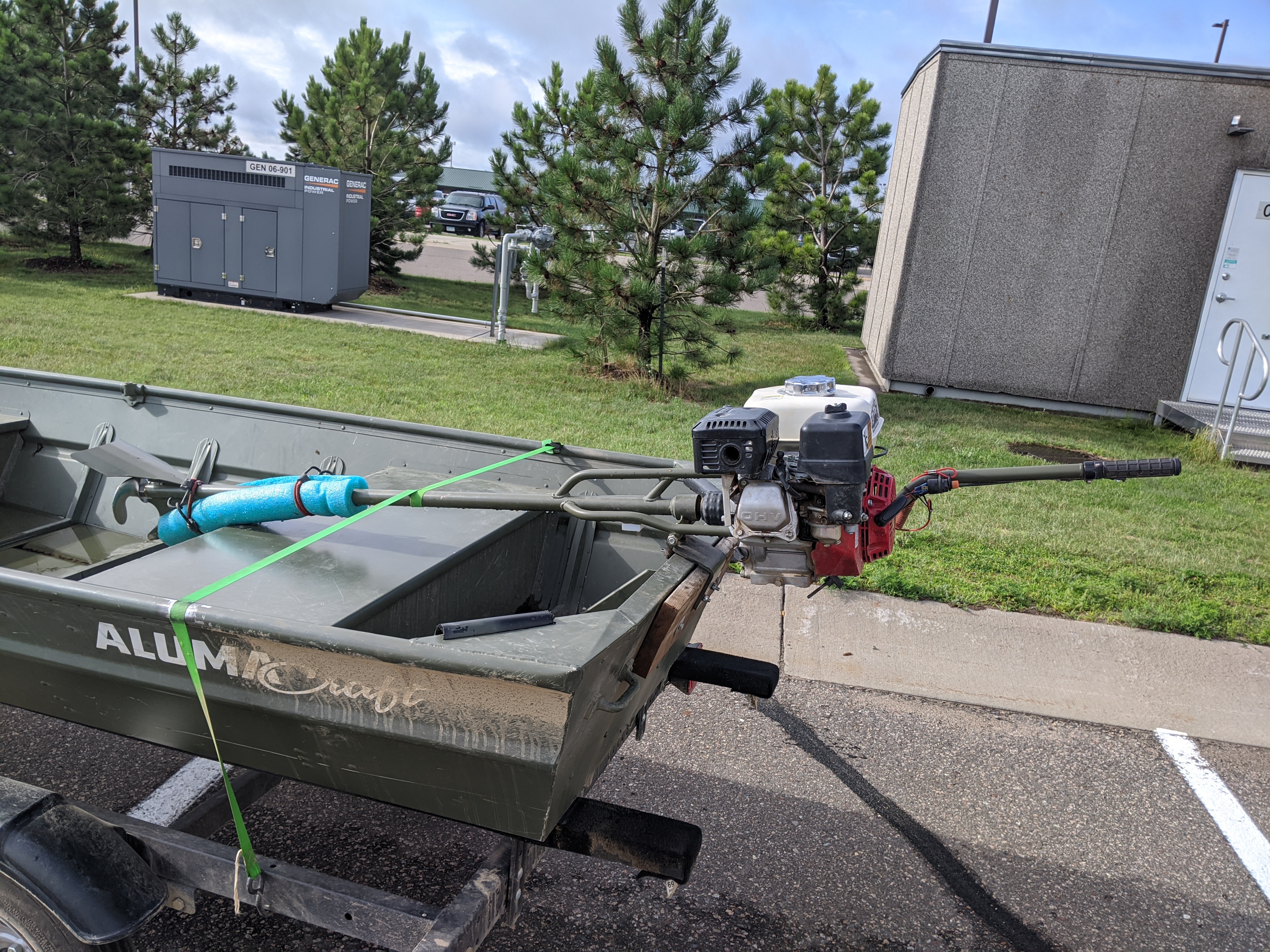
Every so often there is a boat ramp available, but usually we drag the boat into the wetland from the road.
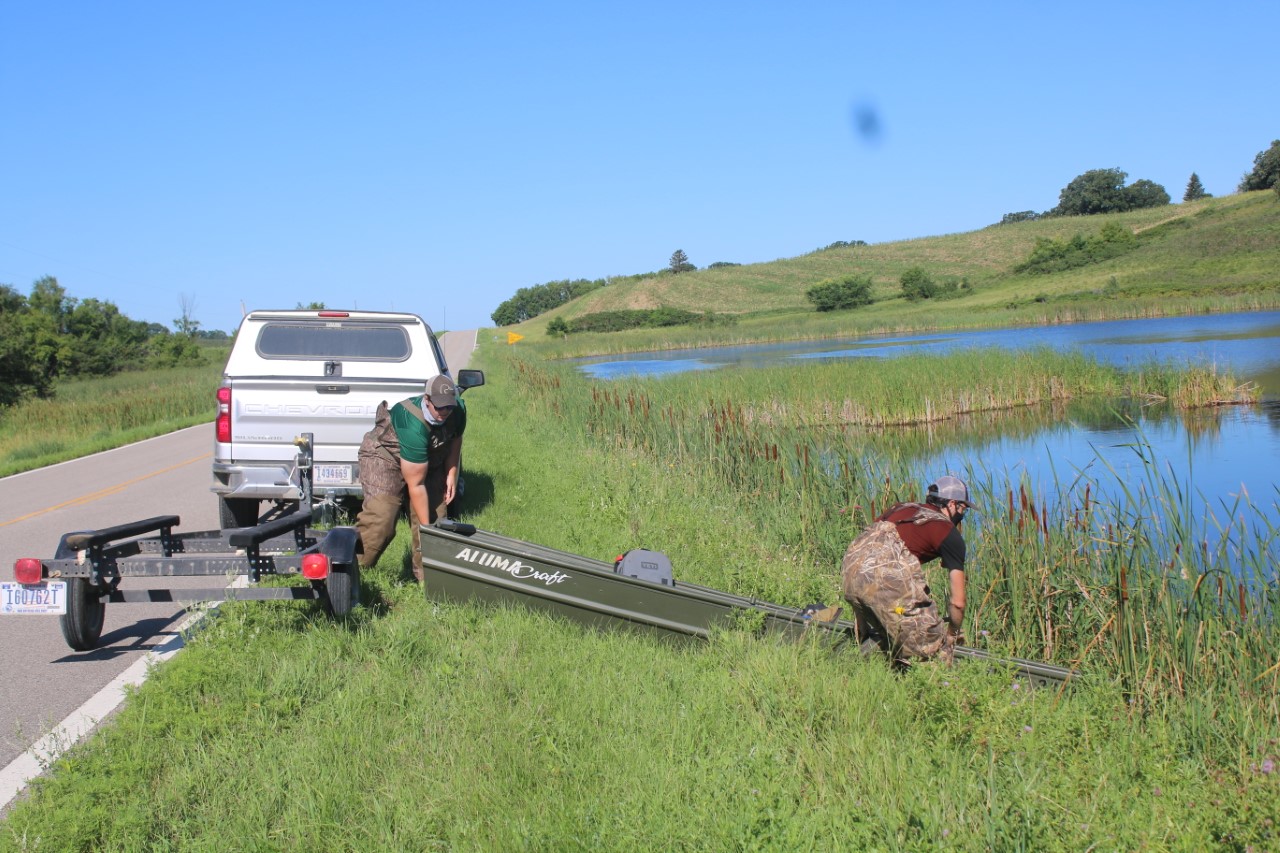
End of 2020 Field Season
Well, that was an intense last 8 weeks! Tori and I tagged 40 swans from almost every region of Minnesota. Now that there is a break in the action we’ll provide some posts explaining more about the fieldwork.
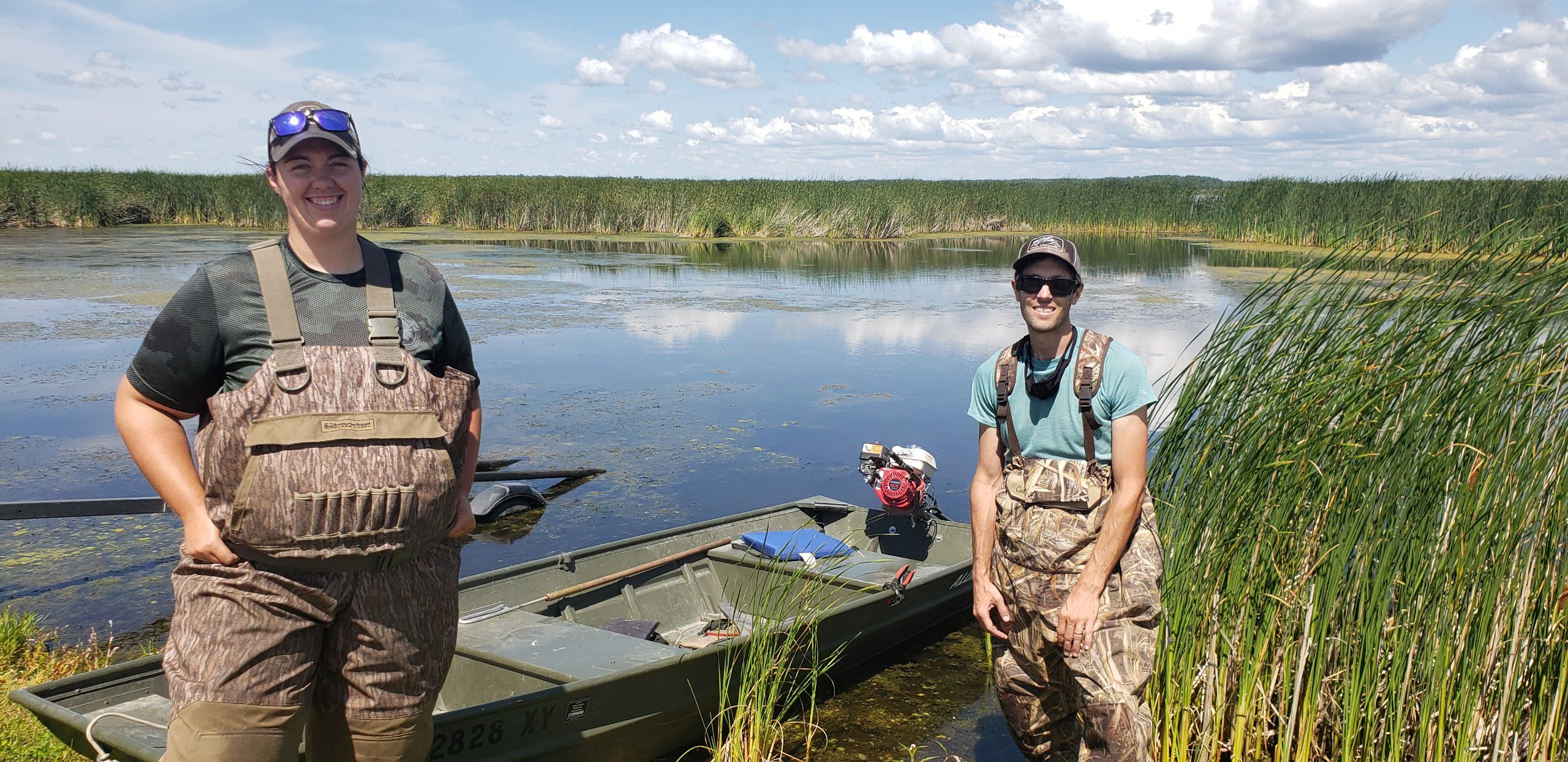
Photo Credit: Brad Dokken
June 27, 2020
Start of the 2020 Field Season
As the molt season approaches we’re gearing up to tag trumpeter swans this summer. So far in Minnesota we’ve tagged 4 swans: one at Minnesota Valley National Wildlife Refuge, the second and third on Three Rivers Park District properties, and the fourth on an area restored by the Reinvest in Minnesota (RIM) and Wetlands Reserve Program (WRP) near Waconia.
If you aren’t familiar with the RIM and WRP programs, which work to
restore wetland habitats that are critical to waterfowl and other
species, check them out at these links:
Reinvest
in Minnesota
Wetlands
Reserve Program
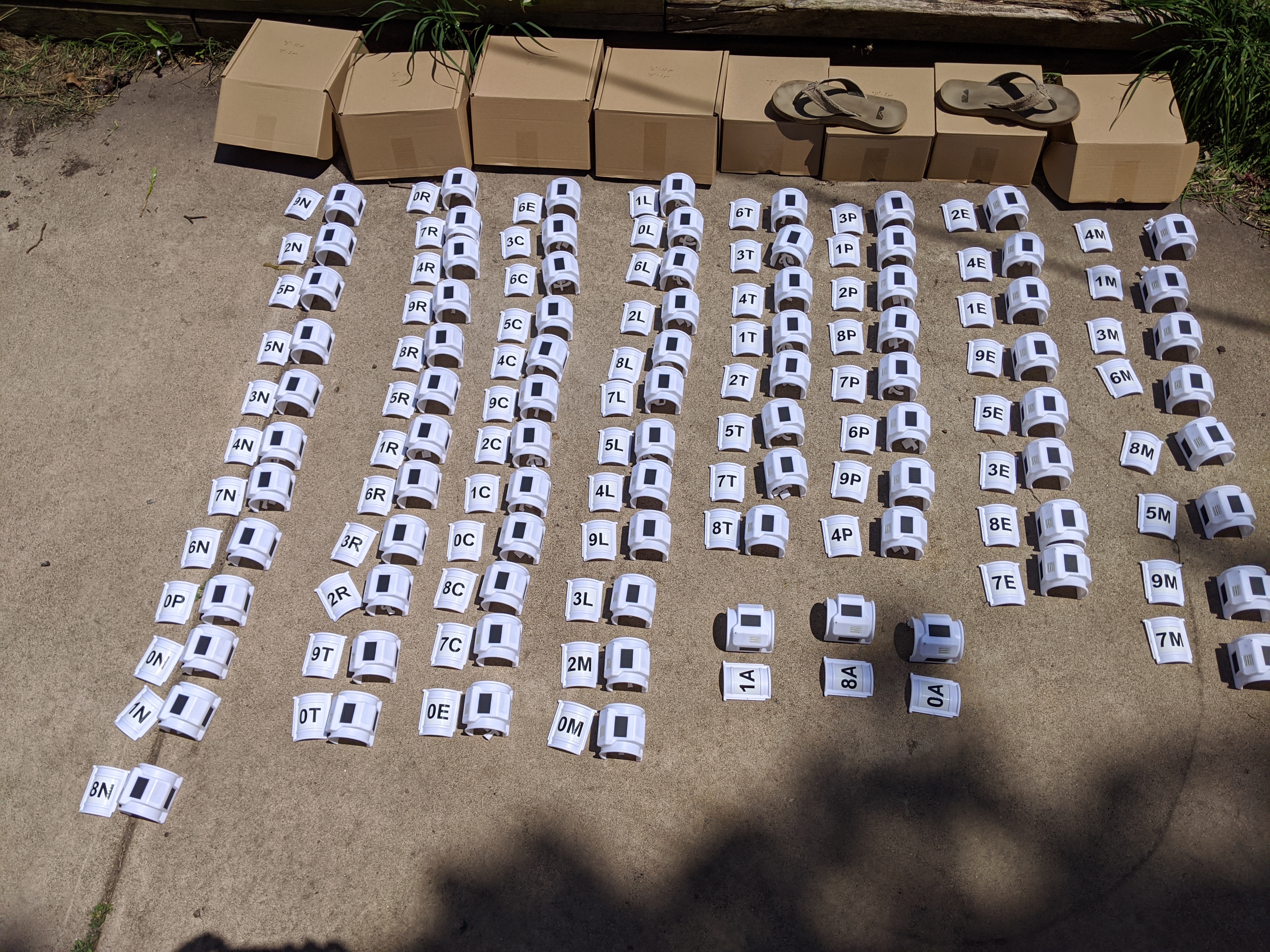
April 18, 2020
New Updates tab created!
Welcome to the new Updates page! We’ll release a few posts in a row to get people up to speed on the latest project news
Expanding the geographic extent of fieldwork in 2020
Since the inception of this project in the summer of 2019, we’ve had the privilege of partnering with many natural resource agencies to expand the geographic extent of this project. In addition to marking swans in Minnesota, project partners plan to mark swans in Iowa, Wisconsin, Michigan, Ohio, and Manitoba. Check out the Project Partners tab for a list of collaborators.
Additional research questions
In addition to deploying GPS transmitters on trumpeter swans, we plan to collect genetic samples using blood or feathers. These data will allow us to pursue new research objectives described below.
We will quantify the concentration of lead in the blood to establish baseline measurements in trumpeter swans across the majority of the Interior Population breeding range. A lot is known about trumpeter swans brought into clinics and rehab centers for severe lead poisoning, but less is known about overall concentrations of trumpeter swans in the wild. We will link movements and behavior of swans to lead concentrations, allowing us to evaluate whether there are impacts of sub-lethal concentrations on swans in the wild.
We are also collecting blood for genomic analyses. The Interior Population (IP) of trumpeter swans was re-established using swans from two main sources, Alaska, which is part of the Pacific Coast Population, and the Tri-State area (Wyoming, Montana, Idaho), which is part of the Rocky Mountain Population. More work is needed to evaluate the current genetic diversity and gene flow in the IP and quantify the extent that it has differentiated from these source populations. We will also investigate the role of genetic lineage in the current migratory behavior of IP trumpeter swans (since Alaska swans migrate whereas Tri-State swans do not).
Arkansas fieldwork
At the suggestion of The Trumpeter Swan Society we’re currently exploring options for capturing several trumpeter swans on their wintering grounds in Arkansas during 2020-2021. Catching swans on the wintering grounds will ensure that we’re increasing the number of long-distance migrants in our sample because swans over-wintering in Arkansas will migrate north in the spring to Midwestern states. Stay tuned for info as plans develop.